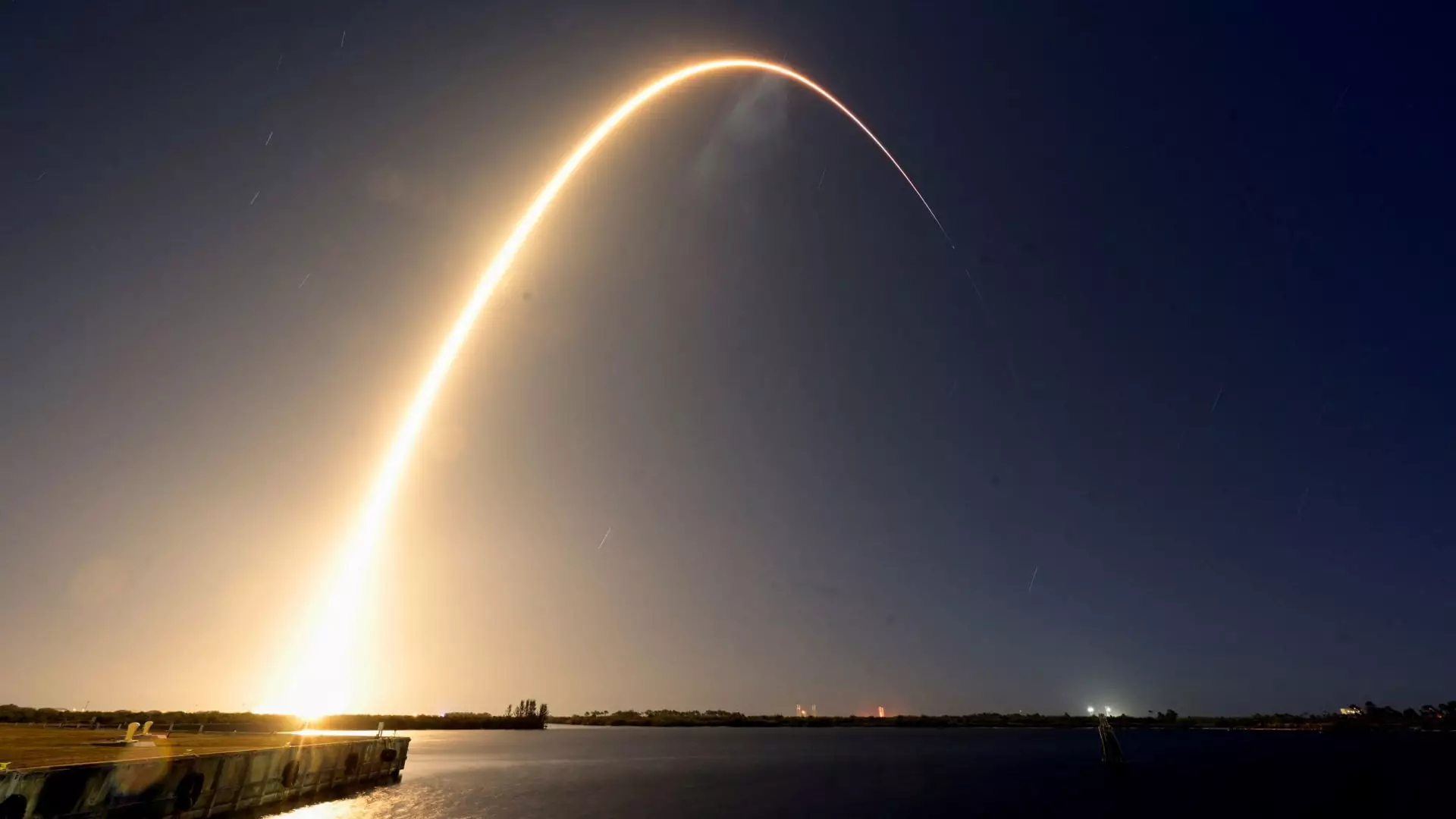In an age where the cosmos beckons humanity with endless possibilities, companies like Firefly Aerospace are rising to the challenge of lunar exploration. Based in Texas, this innovative rocket and spacecraft manufacturer has launched its first moon mission under the auspices of NASA’s Commercial Lunar Payload Services (CLPS) program. The mission, marked by the launch of the “Blue Ghost” cargo lander aboard a SpaceX Falcon 9 rocket, promises to set a new precedent in the emerging field of lunar services. As governmental agencies like NASA spearhead a renewed interest in lunar exploration, Firefly Aerospace is positioning itself at the forefront of this pioneering era.
Early Wednesday morning, Firefly’s Blue Ghost embarked on a monumental 45-day journey toward the Moon, laden with ten government and commercial payloads, all encompassed within a significant $101 million contract with NASA. Firefly Aerospace is typically recognized for its Alpha rockets that deliver satellites into orbit, but this latest venture marks a strategically important shift towards lunar landers and service operations in space. Jason Kim, the CEO of Firefly, articulated the company’s commitment to the mission, emphasizing a focus on execution from launch to a soft landing on the lunar surface.
This mission is particularly significant as it not only represents Firefly’s maiden moon venture but also encapsulates their larger goal of impacting future human exploration of the moon. The ambition to support the Artemis program demonstrates their alignment with the evolving landscape of space exploration, where both governmental and commercial collaboration is essential.
The landscape of lunar exploration is dotted with both successes and failures, as exemplified by the experiences of other companies in the field. Notably, Astrobotic and Intuitive Machines, two other players in the CLPS program, launched missions last year but encountered setbacks—the former’s mission failing outright while the latter faced a precarious landing situation. Firefly recognizes these challenges and has meticulously outlined a series of 17 milestones leading up to a successful lunar landing, five of which have been achieved to date. This level of preparation highlights not only the importance of the mission but also a commitment to learning from predecessors.
With aims to land on the Mare Crisium lunar basin, Blue Ghost is set to operate for an entire lunar day—approximately 14 Earth days—and venture into the darkness of the lunar night for further assessments. Achieving these operational milestones is a testament to Firefly’s engineering capabilities and understanding of the harsh lunar environment.
In a fascinating twist, Firefly’s mission was not solitary; SpaceX’s Falcon 9 rocket also transported a lander from the Japanese company ispace. This collaboration emphasizes the collaborative nature of space exploration today, where rideshare agreements are becoming increasingly common. The idea that multiple companies can share resources for common goals bodes well for the future of space transportation and lunar operations.
Additionally, the upcoming year is expected to see an influx of lunar landing missions, with NASA estimating that five U.S. companies could launch by 2025. This potential surge reinforces the notion that the lunar economy is on the brink of blossoming, driven by a mix of scientific curiosity and commercial interests. As companies converge on this cosmic front, the spirit of innovation breeds competitiveness and collaboration alike.
Firefly Aerospace’s Blue Ghost mission is more than just a scientific endeavor; it’s a bold statement about the future of human space exploration. As we anticipate its lunar landing on March 2, the mission embodies the aspirations of a new generation of space travelers. With meticulous planning, strategic partnerships, and lessons learned from past endeavors, Firefly is embarking on a journey that could pave the way for humanity’s extended reach into the cosmos. As we look toward the Moon and beyond, this mission is emblematic of the possibilities that await, driven by innovation and human curiosity.

